 View Winners →
View Winners → Authentic Argentinian Food in Old Town Pasadena: 1810
By Brianna Chu
Gustavo Landgrebe’s restaurant, 1810, is celebrating its tenth year, and heralded in that milestone with some updates to both its interior and its menu. The restaurant is a rustic, warm, cozy space with beautiful exposed brick. One of the new features post-remodel is a bar area, with the white marble countertop and new backsplash. They’re currently still adding some finishing flourishes: like improving their front patio, adding some more plants, and changing some of the art on the walls – Landgrebe’s mother is bringing some photos of Buenos Aires that they plan on hanging on the walls to bring a bit of Argentina to Pasadena.

1810’s exterior. – Photo by Brianna Chu / Beacon Media News
The restaurant’s name, 1810, is a patriotic homage by Landgrebe to his native country, Argentina, and its history. Between May 22-25 in 1810, a spontaneous revolution, “cabildo abierto,” arose, during which the Primera Junta, or First Assembly, was created. This was the beginning of the Argentine War of Independence against Spain, and is a prominent holiday that is still celebrated in Argentina.
Landgrebe has been working in the restaurant industry since he immigrated to the United States in 1994. Before that his paternal grandfather owned restaurants back in Argentina, but Landgrebe was quite young at the time and didn’t really grow up in the business, and rather found it later in life. In 2005, he left a job working for an Argentinian restaurant chain to open his own place, a tapas wine bar in West Hollywood which he owned until 2010, right after he opened 1810 in Pasadena in 2009. Landgrebe and his ex-partner opened a Downtown Los Angeles 1810 location in 2014, which Landgrebe went to manage. However, that location closed about a year ago, and Landgrebe returned to Pasadena and bought out his partner; so 1810 is now run by him and his sister, Florencia.
Alongside the remodeling changes, some new menu items were created by chef José Albertini of Cafe Alba. Most of these new items are appetizers, like the ceviche, bruschetta, and burrata salad. Their mainstay, grilled meat, has remained mostly the same except for the quality. The other update that was implemented with the menu revamping was a greater focus on their meat quality: their chicken is now organic, they buy grass-fed beef, and wild salmon. Landgrebe counts asada, grilled meat, as traditional Argentine fare, along with sausage and sweetbread. Their menu features mixed plates with an assortment of meats meant for three to four people to share, as meals are usually a family and friend affair, and they want to encourage trying new things. Their parrillada mixta, for instance, includes sweetbreads (do not confuse this with sweet breads, which are breads that are sweet – sweetbreads are offal, glands of the cow, etc.) and blood sausage, which some may not try on their own.
People may often associate Argentinian food with meat, which isn’t necessarily wrong, but Landgrebe notes that there are Italian and Spanish influences on Argentinian food. He opines that the pizzas in Buenos Aires are some of the best in the world! Thus, 1810’s menu includes four pastas, and food that gently reflects influence from those Spanish and Italian backgrounds, as well as some touches from other South American cuisines. For instance: the recipe for their new appetizer addition, the ceviche, is Peruvian. 1810 prides itself on the freshness and quality of all its food. All of their meat is bought in full slabs, and they cut their rib-eye, New York, strip, and skirt steaks themselves in-house. Almost everything is handmade fresh in-house daily; the exceptions: dulce de leche and sausages, supplied from Argentinian vendors, and the gnocchi, which they used to make in-house too but now buy from an Italian vendor. But everything else – ravioli, salad dressings, the chimichurri, the mashed potatoes – is handmade.
There are a few items on the menu that aren’t strictly Argentinian, as they’ve adjusted to their clientele’s palates. Of their eight salads, only two are Argentinian style salads; the rest are American. The main difference, Landgrebe explained, is in the dressing. Argentinians dress their salads more simply, maybe some olive oil and balsamic vinegar, or if a dressing, a nice lemon dressing. So they went to the drawing board to make some homemade dressings for their salads.
Their homemade chimichurri sauce is comprised of parsley, garlic, roast chilies, lemon juice, and olive oil. They use it as a dipping sauce for the bread, but encourage you to keep it to use on the meat. You can even buy their chimichurri for yourself – they regularly have customers asking after the sauce! It’s magic on bread and meat: the olive oil never overwhelms the rest of the flavors, the garlic shines through, the chilies provide welcome warmth, while the lemon juice to keeps it bright.
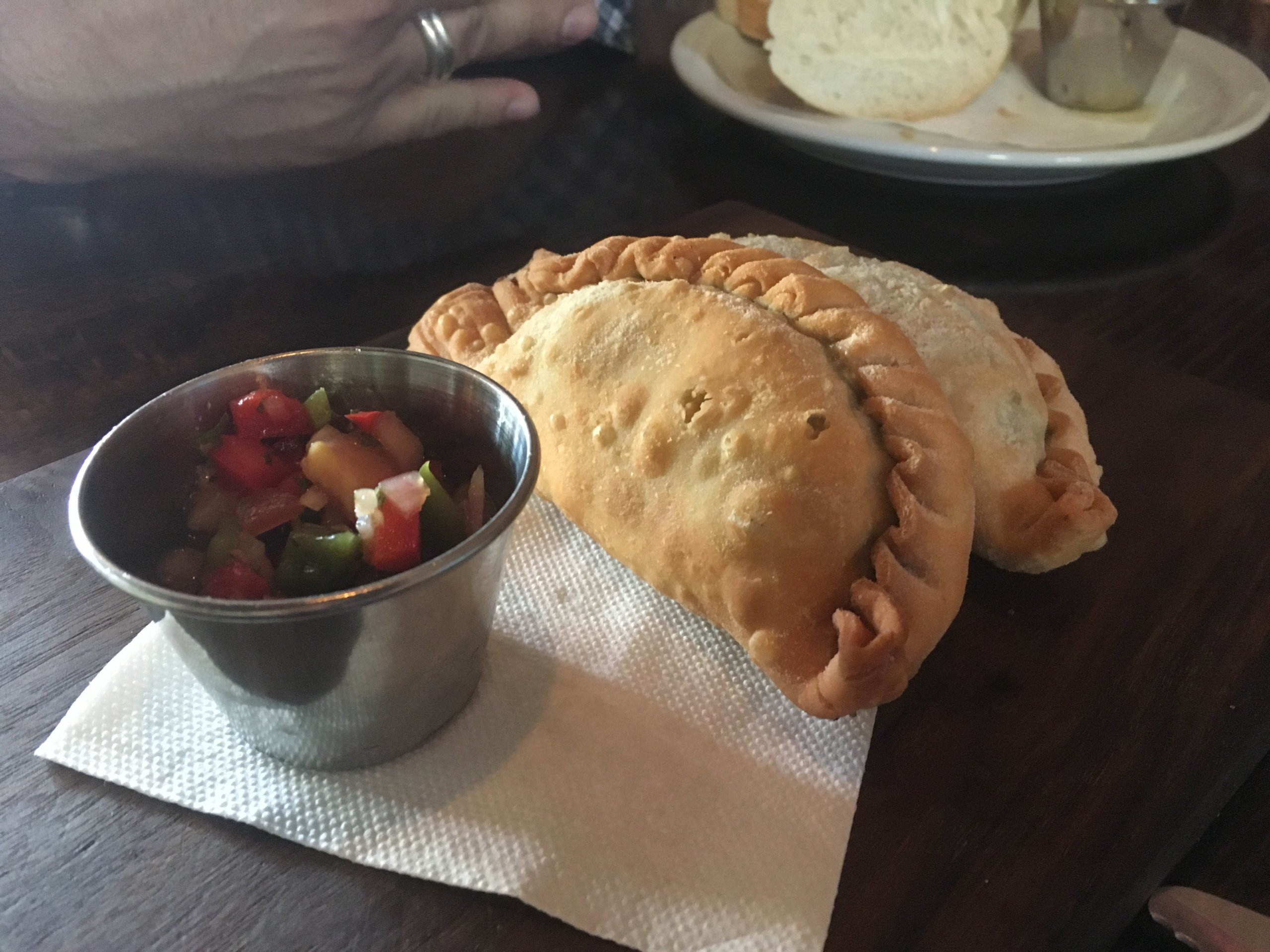
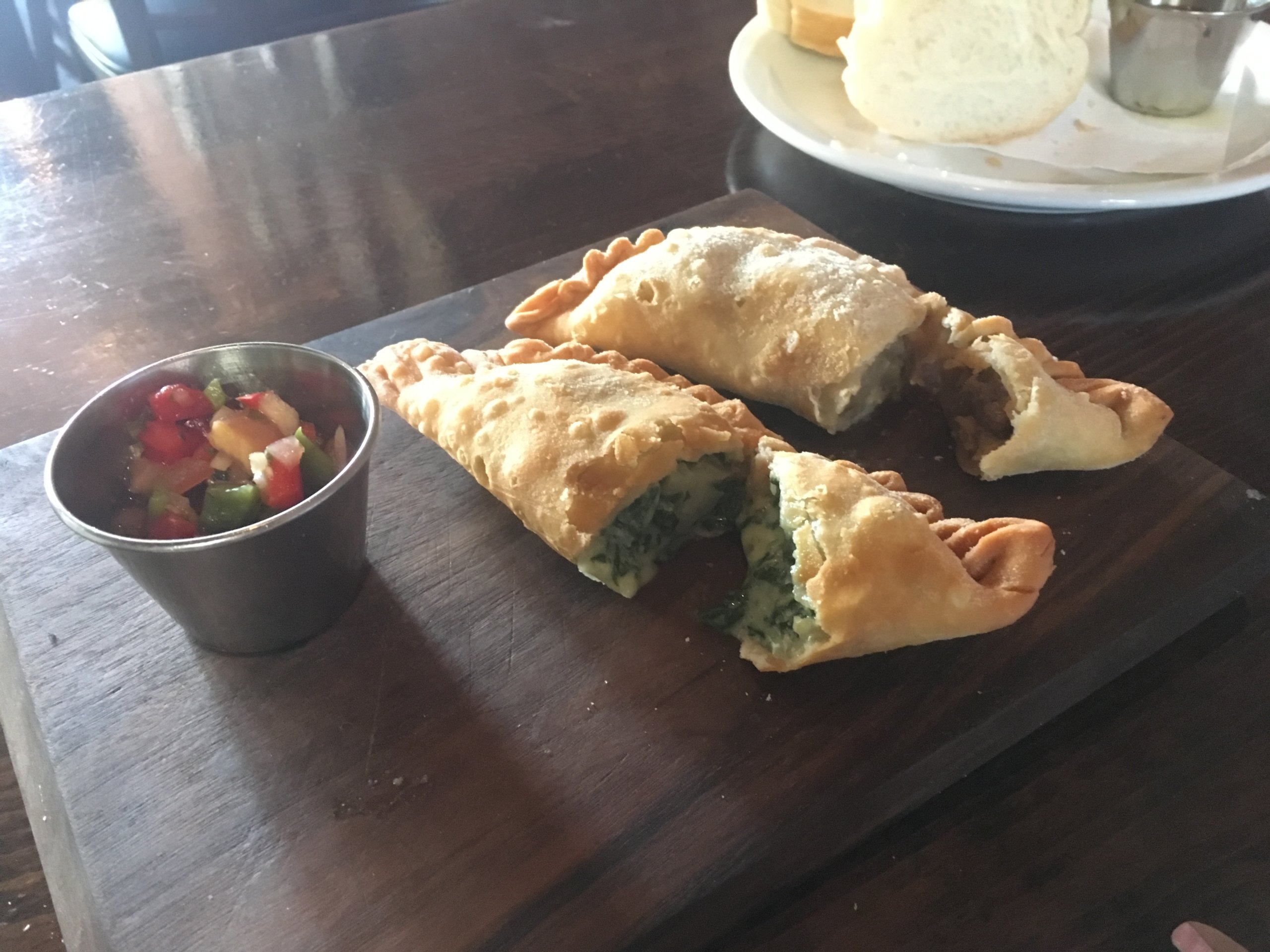
Fresh, warm empanadas! – Photos by Brianna Chu / Beacon Media News
We first sampled two of their fantastic empanadas: the traditional beef, and the spinach and ricotta. The beef was stuffed with hand-cut pieces of beef sautéed with onion and spices, then added with hard-boiled eggs and green onion. The mixture was bursting with savory flavor, and I particularly loved pairing it with the bright and fresh salsa. The spinach and ricotta empanada was creamy, savory, and incredibly comforting. Both had perfectly flaky, tender dough and were equally delectable treats!
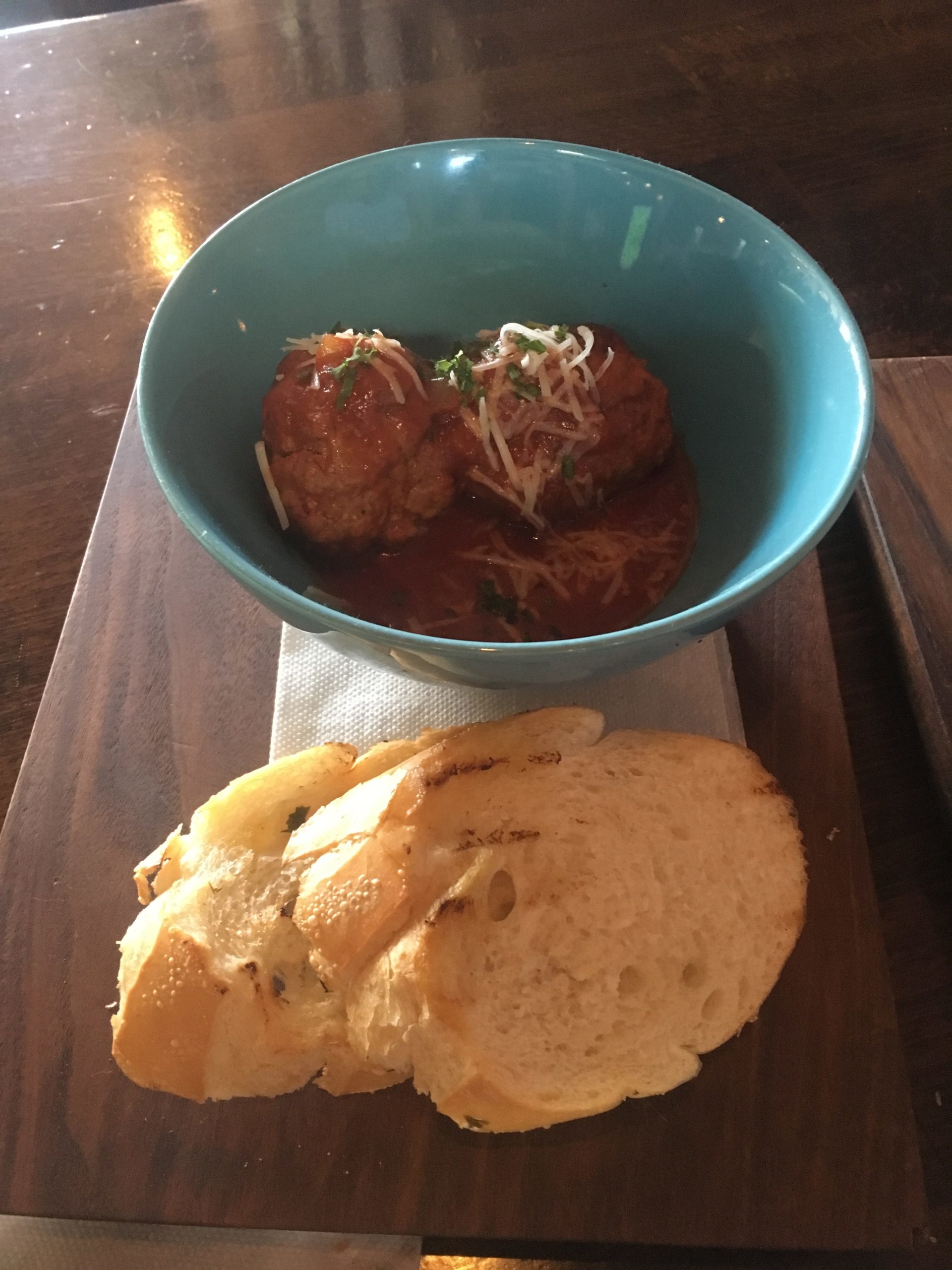
Some traditional meatballs: albondigas. – Photo by Brianna Chu / Beacon Media News
Next, some pork albondigas in fresh tomato sauce with some toast. There’s nothing not to love about a hefty, slightly crumbly meatball packed with fresh meat and herbs, dipped in tomato sauce and topped with cheese. It’s a classic, delicious combination!
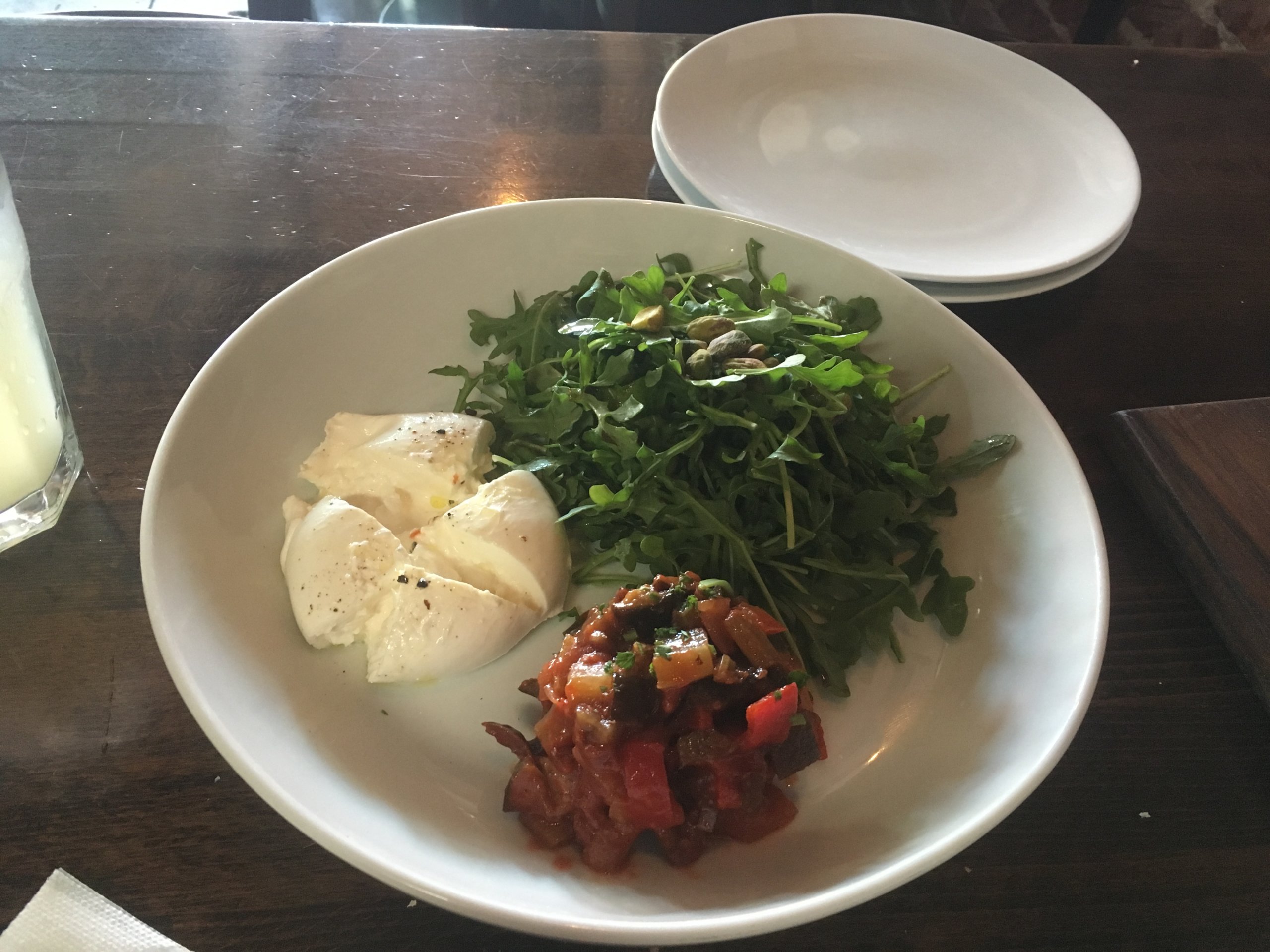
The burrata salad! – Photo by Brianna Chu / Beacon Media News
The burrata salad had three main components: the arugula salad, the caponata, and the fresh quartered burrata with a drizzle of olive oil and freshly cracked pepper. The lemon vinaigrette on the arugula salad was light, not at all overwhelming, and clearly only there to complement the peppery arugula and the saltiness of the pistachio. The caponata was a mixture of roasted pepper, tomatoes, onions, and black kalamata olives, and brought a tanginess to the party. The burrata was fresh, creamy, soft, and an absolute joy to eat. I don’t love salads much, but this was one salad of which I genuinely enjoyed every part.
Landgrebe let me know that the caponata is one of their their new bruschetta appetizer toppings, too, if you’re more inclined to go the carb direction with your starters (and believe me, I totally understand if you do!).
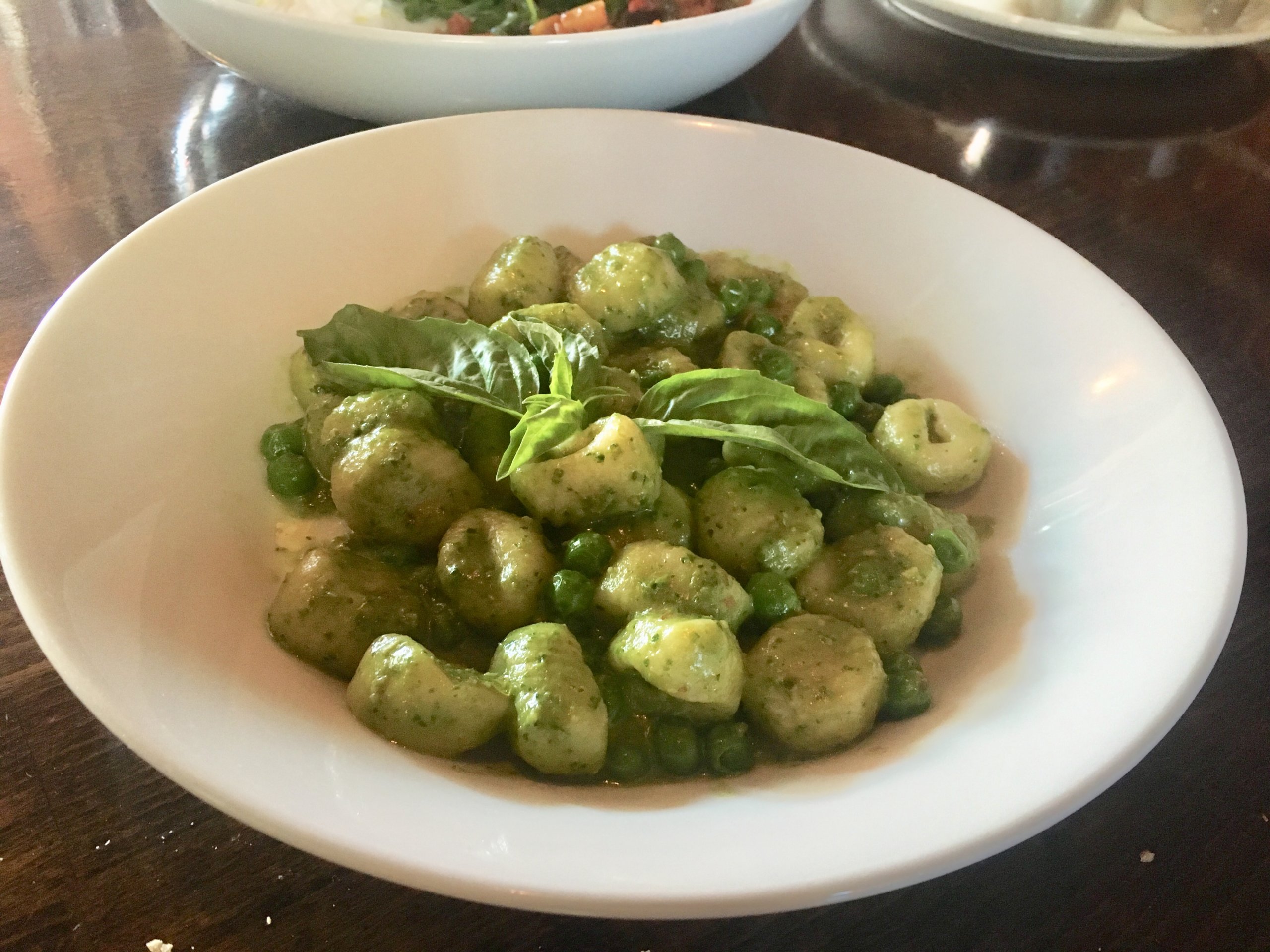
Gnocchi al pesto. – Photo by Brianna Chu / Beacon Media News
The gnocchi was memory-foam mattress soft, and overall, surprisingly not heavy. Though the gnocchi itself is quite filling, choosing a pesto sauce instead of something heavier, along with fresh peas, a little bit of parmesan cheese, and fresh basil, kept the entire dish fairly light and easy to eat.

Grass-fed skirt steak with creamy mashed potatoes. – Photo by Brianna Chu / Beacon Media News.
Finally, the moment I had been waiting for finally arrived: the grass-fed, perfectly medium rare, juicy, skirt steak. Never fear – the portion size is usually bigger, but I asked for a smaller piece because I didn’t want to waste meat. The steak was tender, but gently chewy, pooled in its own jus, and mostly untouched by marinade or interference. They like for the meat to speak for itself at 1810, so except for the flat iron, none of their meat is marinated, just salted and cooked to perfection. They also refuse to give customers steak sauce – they don’t have it, but they do encourage dipping your meat in their chimichurri. That combination is a match made in heaven, enhancing, but never out-shining, the steak’s natural flavor. The mashed potatoes, too, are incredible, and they make fresh batches everyday, both in the morning and at dinnertime. On the weekends, they make probably triple the amount of mashed potatoes that they do during the week. And there’s good reason for that: freshly mashed potatoes with garlic, butter, and sour cream are exactly what mashed potatoes were meant to be. I sat there, five courses in, and made sure I ate every last morsel on that plate. Every bite was blissful.
1810 is a family-welcoming restaurant with fresh, well-prepared and beautifully presented Argentinian food. Bring the whole neighborhood, and I will, too!
1810
(626) 795-5658
Hours
Monday: 11.30AM-10PM
Tuesday: 11.30AM-10PM
Wednesday: 11.30AM-10PM
Thursday: 11.30AM-10PM
Friday: 11.30AM-11PM
Saturday: 11.30AM-11PM
Sunday: 12PM-10PM






































































































